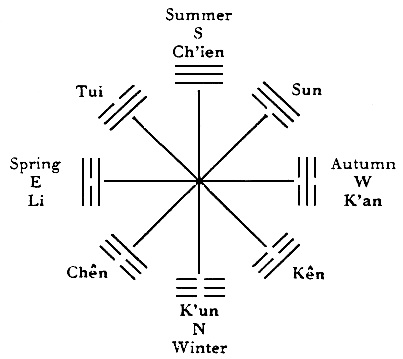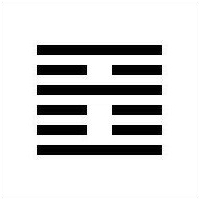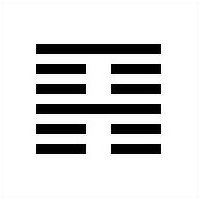The book is enacting the fundamental nature of the Cosmos itself. Even after the most exhaustive and accurate scientific or philosophical account, the most compelling mythology, or the most concise and penetrating poem, the ten thousand things remain, in and of themselves, a mystery beyond us
– David Hinton, I Ching
All is vanity, all falsehood, except that infinite sky. There is nothing, nothing, but that
– Leo Tolstoy, War and Peace
My earliest memory is of snow. I stared out the window in primary school, focussing on the flakes. You follow one for a few seconds then lose it. I tried, tried again, and it was the same. A few years later, on a schoolboy cricket field, I was supposed to be fielding but had other plans. I laid on my back gazing at the sky. I remember the feeling. There’s me, and there’s the blue, and I’m not sure of me because that’s a big space.
Psychologist Jean Piaget developed a theory he called the Mirror Stage which is when infants first recognise themselves as separate image based beings. There I am, indisputably in the world, me as others see me. Before then, we live in oceanic waters. Watch an infant or young child when they are upset or happy and it is an enveloping moment. The world is terrible, the world is wonderful, and there’s nothing you can say to change it.
Where I walk in local woods a school has made nature signs attached to trees. A picture of a butterfly with an explanation, or a painted flower with a number. Ten, twelve, six, with an associated learning exercise. Children love that kind of thing. I was there a few days ago and a small group was on the path ahead of me. Several adults, two children enjoying the signs, and as I passed one of them looked up at me with a beaming smile and total happiness. Isn’t this great, she said without words.
We cannot grasp the world and it’s a mistake, as John Keats advised, trying to unweave the rainbow. But we grasp it contingently, and developmental psychology reflects anthropologically. It wasn’t so long ago when a solar eclipse terrified people who saw it. The majority of world population now has basic education. A few years after the cricket, I had an astronomy poster on my bedroom wall. I didn’t understand but thought it was important to remember. SME sun and MES moon. Sun, moon, earth, means a solar eclipse. Moon, earth, sun, means a lunar eclipse. I wondered, does it exist without the science?
The dance between intellect and cosmos is exquisitely fragile. What we know seems hugely formidable but really isn’t. We live within a scientific and technologically constructed world of cities, medicine, plastics, steel, and computers. We have nuclear power, electricity, Star Trek phones. Kirk to Starship Enterprise: “Beam me up, Scotty.” Space is the final frontier, and the USS Starship had the ultimate mission: “To explore strange new worlds, to seek out new life and new civilizations, to boldly go where no man has gone before.” McCoy was the human feeling person arguing with Vulcan Spock. “Not logical” Spock would say, and McCoy would have to explain, Kirk smiling and amused in the background. There was nearly world devastation with the Covid pandemic. That’s part of the fragility, despite our sophisticated living. True or not, science didn’t know the future and society reacted.
There’s a manual describing the relationship between mind and the universe which is the hardest book I’ve ever read. A Treatise On Cosmic Fire, by Alice Bailey, is over a thousand pages and took me over two years to finish. I didn’t understand most of it, but you’re not meant to. It’s intended as a training exercise which in the Indian tradition is called Jnana Yoga. Jnana, which is discrimination and philosophy, is one of three. The other two are Bhakti which is a training in love through the method of devotion, and Karma which means action. Rumi writings are an expression of Bhakti Yoga. The Bhagavad Gita describes Karma Yoga. What do I do, Arjuna asks Krishna, positioned between two fighting armies. You must act, Krishna replies, within the symbolic battlefield.
Cosmic Fire begins with an Upanishad quotation which is Bhakti and Jnana combined:
To the God Who is in the FIRE and Who is in the waters;
To the God Who has suffused Himself through all the world;
To the God Who is in summer plants and in the lords of the forest;
To that God be adoration, adoration (Sh’vet Upanishad)
There’s an exposition in Cosmic Fire explaining how everything in the universe moves, which creates friction, therefore the universe is fire. Then there are three kinds of fire, which correspond to the principles of spirit, matter, and consciousness or humanity depicted in the I Ching. This seems an exotic subject but you find existentialism echoes in Heidegger, Sartre, Bergson, and Nietzsche. Being and nothingness is the ultimate uncertainty: once upon a time, some years ago, gazing up at that sky.
The middle area between spirit and matter is where you find the map. Maps are powerful. Consider the Periodic Table, DNA diagram, mathematics of space, the Ordnance Survey guide to the Lake District. Maps lead you from A to B with complex in between terrain. It’s the same with divination, and why I like the I Ching. Tarot consists of a Major and Minor Arcana, archetypes and ideas which are part of existence. Isis Unveiled is the title of a book by Madame Blavatsky, saying there are secrets in nature symbolised by the Major Arcana card called The Empress. But how does that fit into daily life, with the questions we have, and answers we need. It’s abstract, and the Tarot is thus a very different map from the I Ching where hexagrams have a whole and holographic significance. Every line, of every hexagram and trigram, relates to the entirety of the system.

Divination asks questions within a map, which are two different factors. The I Ching is a map of the world and throwing coins finds your location. In The Primary Way, Chung-Ying Cheng explains the variables:
It is possible that the method is not accurate, whereas the symbolism and its underlying understanding of the world are adequate to our best experience. On the other hand, we could have a good and accurate method yet lack a good or adequate map to make correct identifications. Of course, a method of divination cannot be totally separated from its map because the method has to presuppose the map in its operation as well as in its projection or identification of a result
With the practice of observation we may not need the I Ching or any other system. We are told Fu Hsi developed the trigrams by looking up at the sky, down to the earth, and noticing the patterns. Perhaps we can do the same. The I Ching term for this is guan, observing the form of things, which according to Chung-Ying Cheng appears in hexagram 21. The principle of observation runs through the entire book but there are moments when it is more apparent. Wilhelm describes noisy society, philosophical elevation, the danger of existence and the meditation solution:
Li represents the sun high above, while Chên represents the turmoil of the market below. The inner structure of the hexagram is by no means as favorable as the outer form might lead one to conclude. It is true that clarity and movement are present, but between them, as opposing elements, there stand the nuclear trigrams K’an, danger, and Kên, Keeping Still
The name for hexagram 21 is Biting Through which in a guan sense suggests the discovery of hidden meaning. This is central to the I Ching. Every moment consists of varying lines which are often of no concern but if we have a question, we look closely at the patterns. Biting Through is perhaps not the best expression of guan. Keeping Still, 52, is a hexagram for meditation. Contemplation, hexagram 20, is an observation description of I Ching practice: “The hexagram has a double meaning: it “partly gives,” i.e., provides a sublime view, and “partly takes,” i.e., contemplates, seeks to attain something by contemplation.”
 |
 |
 |
Gaining and giving, viewing and doing, don’t stop with a hexagram reading or with ideas and thinking. There isn’t a demarcation between thought and feeling in Chinese philosophy. David Hinton explains this in relation to the nothingness from which they arise:
Known in ancient Chinese as “heart-mind” (心), for no distinction was made between heart and mind, consciousness is made of the same generative tissue following the movement of return: thoughts and emotions appearing out of emptiness and returning to their root in that same emptiness (Hinton, I Ching)
Hinton’s version of hexagram 20 uses a bird’s view to describe the principle of contemplation. They are not often mentioned, but Chinese pictograms are associated with hexagrams and for number 20 the image is that of a bird and an eye. The bird flies above and looks down below. Wilhelm’s translation is different, emphasising the six levels of a hexagram and thus six stages of contemplation. This is a slight variation from Wilhelm, edited by W.S. Boardman in The Pocket I Ching:
First line: Childlike contemplation
Second line: Contemplation through one’s doorway
Third line: Self contemplation – to decide one’s way
Fourth line: Contemplating the light of the kingdom
Fifth line: Self contemplation – to judge oneself
Sixth line: The selfless contemplation of life
The first line reminds me of snow and the sky. Contemplation starts at self, begins to grow, becomes awareness of one’s entire life. Lines 4, 5 and 6 are contemplation pertaining to society and civilisation, one’s place within it, and eventually transcending it.
In addition to the method and process of contemplation, hexagram 20 is a map of education where the Sage is familiar with self and other at different levels of expression. The term for Sage is shengren which should be read poetically not literally or superstitiously. It means a philosopher or wise person with complete knowledge. The I Ching terms “great man” and “superior man” are less final and complete.
We consult with the Sage when we read the book. The great man or woman often means a teacher or advisor you know in your life. The superior man or woman is you, potentially, making the right decision or understanding a situation better.
I write like this is a magazine column. With research, references, and a lot of time. If you like it, perhaps you would support me.
